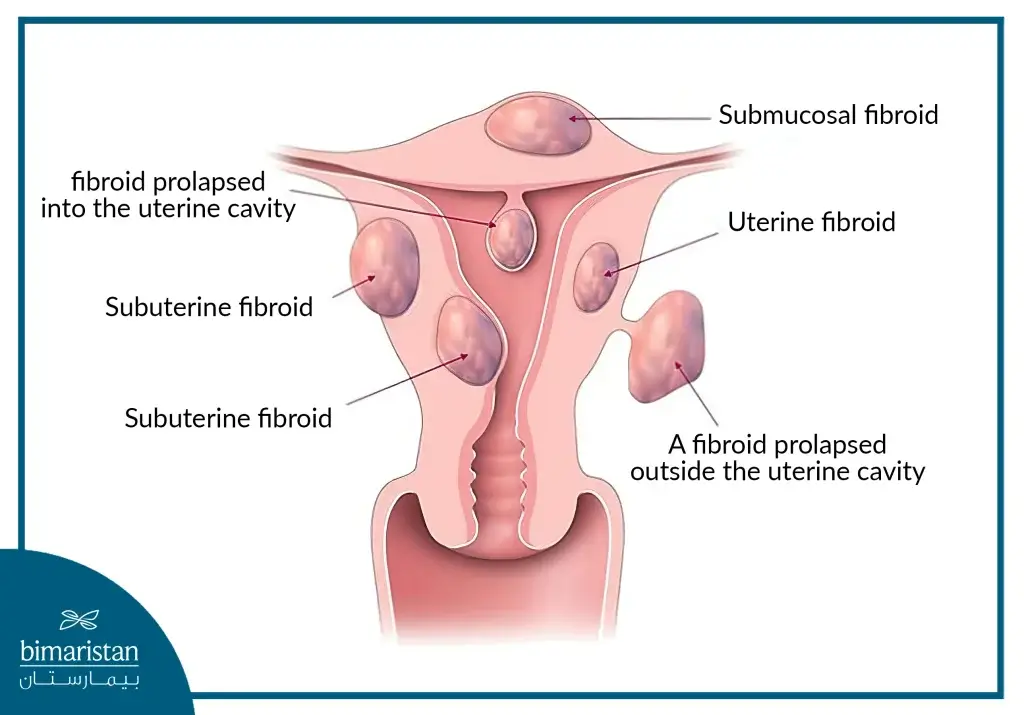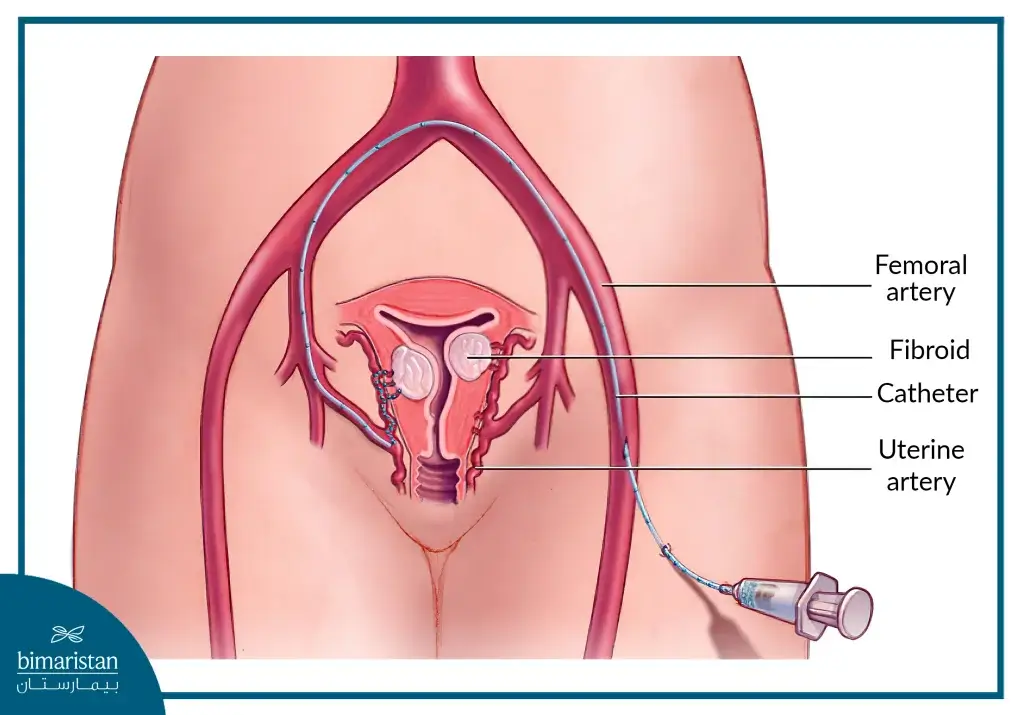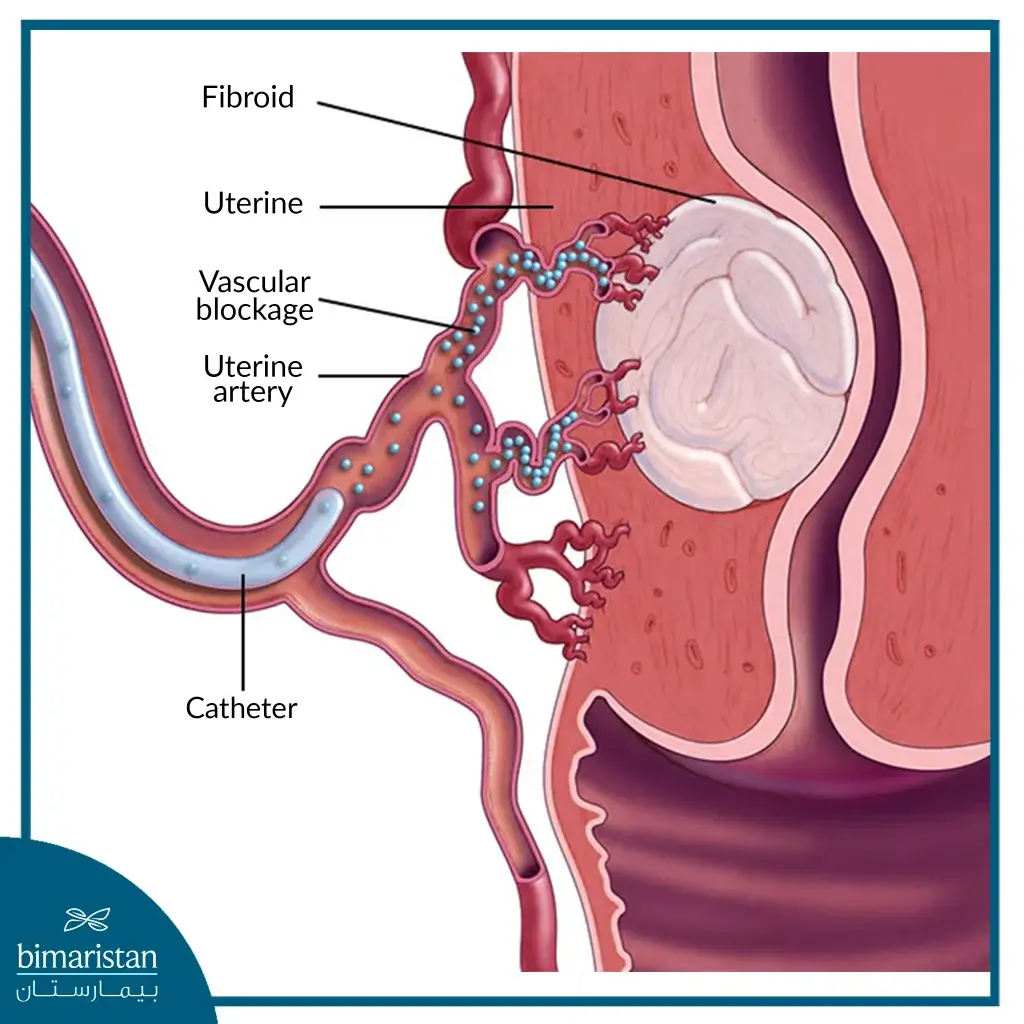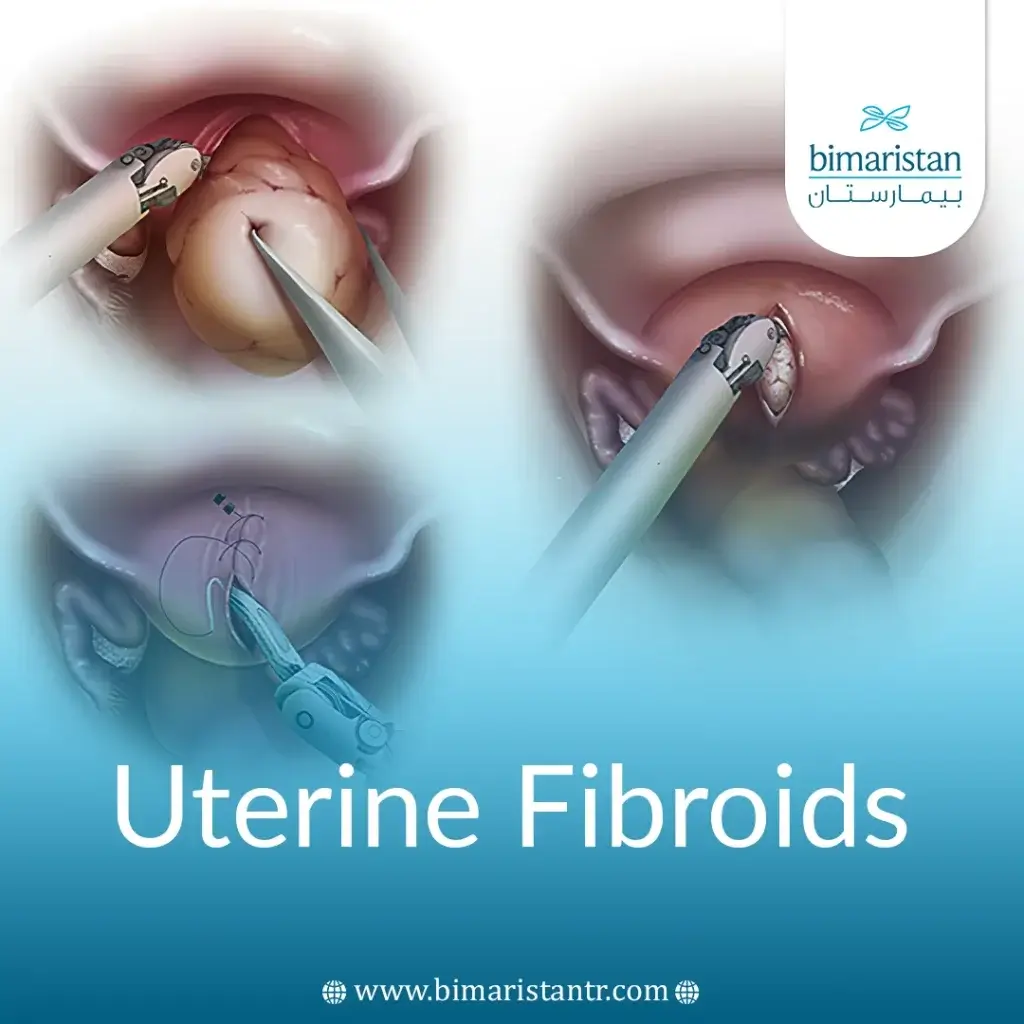Uterine fibroids are a common condition that affects many women of all ages and greatly affects their quality of daily life. With medical and technological advances, many modern methods have emerged to treat these tumors effectively and safely. Among these methods is uterine fibroid catheterization, which has proven its worth as a non-surgical alternative with a high success rate and fewer complications compared to traditional operations.
In this context, Turkey is a leading destination in providing this type of treatment, thanks to its advanced medical equipment and highly experienced medical staff. This article provides a comprehensive overview of uterine fibroid catheterization in Turkey, focusing on the reasons that make Turkey a distinct choice for this treatment.
What are uterine fibroids in women?
Fibroids are benign (non-cancerous) masses of muscle tissue in the wall of the uterus.
These growths can be very small or as large as an orange.
In most cases, there is more than one fibroid.
They are not associated with cancer, rarely develop into cancer, and do not increase the risk of uterine cancer.
Fibroids are also known as myofibroids and leiomyomas.
Types of Intrauterine Fibroids
They are named according to their location within the uterus: submucosal, intramural, or subserosal.
Submucosal fibroids
Located just below the inner lining of the uterus. Some of these fibroids grow on a stalk. These are referred to as “pedunculated.”
Intramural fibroids
Located entirely within the muscular wall of the uterus.
Serous or subserosal fibroids
Located on the outside of the uterus, just below the outer covering of the uterus.
Subserosal fibroids may also grow on a stalk and are called pedunculated.

Submucosal or intramuscular fibroids usually cause abnormal bleeding.
Intramural and subserosal fibroids are the common causes of pelvic pain, back pain, and general pressure that many women experience, especially during menstruation.
What are the symptoms of uterine fibroids (benign uterine cancer symptoms)?
Because fibroids can be very small, they are not always associated with symptoms.
The most common symptom of uterine fibroids is heavy or prolonged menstrual periods, which can lead to anemia and pelvic pain.
Additional symptoms of uterine fibroids include:
- Back or leg pain as the fibroids press on the nerves that supply the pelvis and legs.
- Pain during intercourse.
- Bladder pressure causes frequent urination and a constant need to urinate.
- Press on the bowels, causing constipation and bloating.
- Abnormally enlarged abdomen.
Who is at risk for fibroids?
It is estimated that 20 to 40 percent of women over the age of 35 have uterine fibroids. Despite their commonness, most fibroids do not cause symptoms and do not require treatment.
African American women are at higher risk. Fifty percent of them may have large fibroids.
Most women with fibroids begin to develop symptoms in their late 30s or 40s.
Fibroids often stop growing or even shrink after menopause.
However, fibroids that continue to grow and cause symptoms should be treated immediately.
Previously, treatment methods were completely surgical, but today, treatment is done by uterine artery embolization, which we will discuss in this article.
Definition of uterine fibroid treatment with catheterization in Turkey via painless interventional radiology
Embolization of the uterine artery feeding the uterus with interventional radiology is a procedure to treat benign fibroids without surgery.
Instead of surgery, a doctor (radiologist) uses special imaging techniques to treat uterine fibroids.

During the procedure, the blood supply to the fibroids is cut off, causing the fibroids to shrink. Local anesthesia is usually used, meaning the patient is awake but will not feel any pain. The procedure takes about 60 to 90 minutes.
Description of Uterine Artery Embolization for Fibroid Treatment
You will be given a sedative, a medicine that makes you relax and sleepy.
Your radiologist will make a 1-centimeter (cm) incision (cut) in your skin.
He will then insert a catheter (a thin tube) into your femoral artery. Like a cardiac catheterization, this artery is located in the upper part of your leg.
The radiologist will then insert the catheter into your uterine artery. This artery supplies blood to your uterus. (This procedure is also done to thrombolysis the prostate artery in men.)
Small plastic or gelatin particles will be injected through the catheter into the blood vessels that supply blood to the fibroids.
These molecules will clot and block the uterine artery, blocking the blood supply to the tiny arteries that carry blood to the fibroids. Without this blood supply, the fibroids shrink and then die.

Right and left uterine artery embolization will be performed.
Why is Uterine Fibroid Embolization (UFE) performed?
Uterine artery embolization is an effective method for treating fibroids that are not very large.
Sometimes, women in Turkey apply it after childbirth to treat severe vaginal bleeding.
Women who may want to get pregnant in the future should not undergo this procedure.
Risks of treating uterine fibroids with catheter without surgery
Uterine artery embolization is generally safe.
Ask your doctor about these potential problems in detail.
Some of these risks can be summarized as follows:
First and foremost is the potential risk during anesthesia in addition to the risks of any surgical procedure:
- Bleeding
- Infection
- Bruising
The risks or negative effects of uterine catheterization and uterine artery embolization are:
- Injury to the artery or uterus.
- Complications during future pregnancy.
- Some of these conditions are intrauterine growth restriction (a condition that causes the fetus to grow more slowly than normal in the womb).
- Preterm labor (the baby is born early), bleeding after delivery, problems with the placenta, and miscarriage.
- Pregnancy is not recommended after this procedure.
- Premature menopause.
Before having uterine artery embolization
Always tell your doctor or nurse if you are pregnant, even if you suspect you are.
Medications you are taking, including over-the-counter medications, supplements, or herbs.
You may be asked to stop taking aspirin, ibuprofen (Advil, Motrin), warfarin (Coumadin), and other medications that make it harder for your blood to clot.
Ask your doctor about medications you should take on the day of your surgery.
If you smoke, try to stop smoking, and your doctor or nurse can help you.
Read about: Uterine prolapse: Discover the causes, effective treatments, and prevention
On the day of the non-surgical uterine fibroid treatment using a catheter
You will usually be asked not to drink or eat anything for 6 to 8 hours before the procedure.
Take the medications your doctor told you to take with a small sip of water.
After the catheterization of fibroids
Women usually stay in the hospital overnight.
Some women can go home a few hours after the treatment, but this is less common.
You will receive pain medication.
You will be asked to lie down for 4 to 6 hours after the procedure.
Pelvic cramps are expected during the first 24 hours after the procedure.
They may last up to two weeks, and the cramps may be severe and last more than 6 hours at a time.
The treated fibroid tissue may pass through the vagina.
Expectations about uterine fibroid treatment using coagulation
Uterine artery embolization usually works well to reduce pain and bleeding from fibroids.
Studies on the non-surgical removal of uterine fibroids by catheterization in Turkey in women.
A study talks about the treatment of uterine artery closure by interventional radiology as an effective non-surgical method for the tumor instead of a hysterectomy.
A study on large uterine tumors shows an effectiveness of up to eighty percent even with large tumors, but you may need to undergo the operation again within a year or two.
We offer you, madam, the best options available in the treatment of uterine fibroids.
Sources:
- Johns Hopkins
- Health Direct
- Office on Women’s Health
